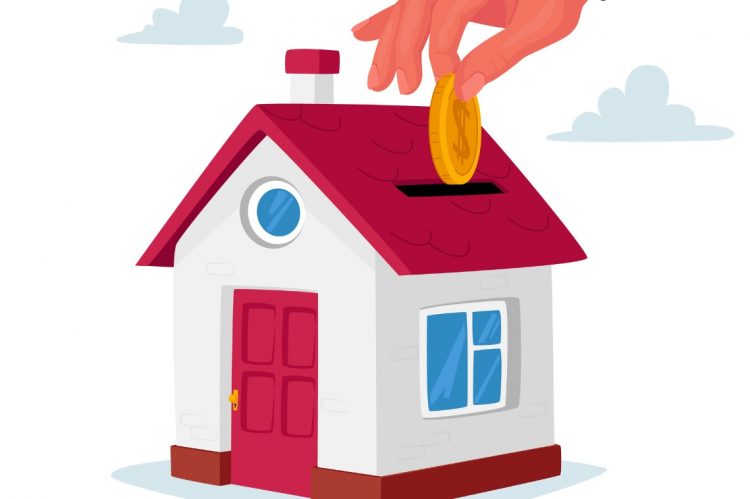Home equity saw a decrease in Q3 2023, while underwater mortgage numbers improved, according to a new report from ATTOM.
ATTOM’s Home Equity & Underwater Report for Q3 2023 found that the amount of equity-ruch homes decreased 49.2% in Q2 to 47.4% in Q3, down from 48.5% in Q3 2022 as well.
While equity-rich levels dropped, the report also found that the portion of mortgaged homes that were seriously underwater continued to improve. Only 2.5% of all residential mortgages (1 in 40) were considered seriously underwater in Q3, down from 1 in 36 homes in Q2 and from 1 in 35 last year. This is also the lowest point in at least four years.
Key highlights:
- The portion of mortgages that were equity-rich went down in 29 of the 50 states, commonly by one to four percentage points. The biggest declines came in the South region, led by South Carolina (from 50% to 43.7%), Florida (from 60.4% to 54.4%), Kentucky (from 42.1% to 37.1%), California (from 63.3% to 58.5%) and Oklahoma (from 36.5% to 32.5%).
- At the other end of the scale, equity-rich levels rose in 21 states, with the largest improvements concentrated in the Northeast region. The biggest increases were in South Dakota (from 46.4% to 49.9%), Maine (from 56% to 59.3%), Connecticut (from 38.6% to 41.5%), New Jersey (from 43% to 45.9%) and New Hampshire (from 56.6% to 59.4%).
- The 10 states with the highest levels of equity-rich mortgaged properties were in the Northeast and West regions. Those with the largest portions were Vermont (79.8%), New Hampshire (59.4%), Maine (59.3%), Montana (59.1%) and California (58.5%).
- Nine of the 10 states with the lowest percentages of equity-rich properties were in the Midwest and South. The smallest portions were in Louisiana (19.7%), Illinois (29.8%), Alaska (29.8%), West Virginia (30.5%) and North Dakota (30.7%).
- The portion of mortgaged homes considered seriously underwater dropped, and remained historically low, in 43 states. The biggest decreases were clustered in the Midwest and the Northeast. The improvements were led by Indiana (from 8.1% to 2.6%), Hawaii (from 3.6% to 1.6%), South Dakota (from 4% to 2.6%), Missouri (from 4.8% to 3.9%) and Maine (from 2.7% to 1.9%).
- States where the percentage of seriously underwater homes increased the most were led by Wyoming (from 3% to 5.9%), Mississippi (from 5.8% to 7.4%), California (from 1.1% to 1.6%), Idaho (from 2.4% to 2.7%) and Louisiana (from 10.5% to 10.8%).
- The Midwest and South regions had nine of the top 10 states with the highest shares of mortgages that were seriously underwater. The top five were Louisiana (10.8%), Mississippi (7.4%), Wyoming (5.9%), Kentucky (5.7%) and Iowa (5.2%).
- The smallest shares were in Vermont (0.9%), New Hampshire (0.9%), Rhode Island (1%), Massachusetts (1%) and Florida (1.3%).
- Only about 258,900 homeowners nationwide were facing possible foreclosure, or about 1 in every 242 mortgaged properties. Of those facing foreclosure, about 238,200, or 92%, had at least some equity built up in their homes.
- States where the largest portion of homeowners facing possible foreclosure had equity in their properties included Utah (97%), Massachusetts (95%), North Carolina (95%), Nevada (95%) and Maine (95%).
- States with the lowest percentages included Louisiana (76%), Maryland (86%), Illinois (86%), Missouri (87%) and Alabama (88%).
Major takeaway:
“By all measures, homeowner equity around the country remained strong during the third quarter as millions of households kept benefitting from the nation’s extended runup in home values. At the same, though, we saw an unusual downturn at the equity-rich end of the spectrum,” said Rob Barber, CEO of ATTOM. “That could have just been a temporary blip. It also could have reflected an increase in long-time owners who had lots of equity built up selling their homes, or perhaps borrowing against their rising wealth and slipping out of equity rich territory. The fourth quarter data should say more about whether residential equity in the U.S. has indeed topped out.”
“Elevated equity levels continue to benefit even those homeowners facing possible foreclosure. They’re providing resources for most delinquent owners to help them refinance their mortgages or sell instead of just walking away and abandoning their properties,” Barber added. “That remains a powerful force working against blight, which can lead to vacant homes.”
For the full report, click here.












